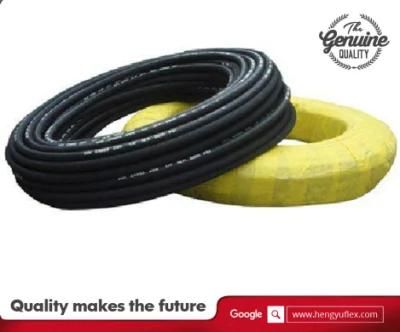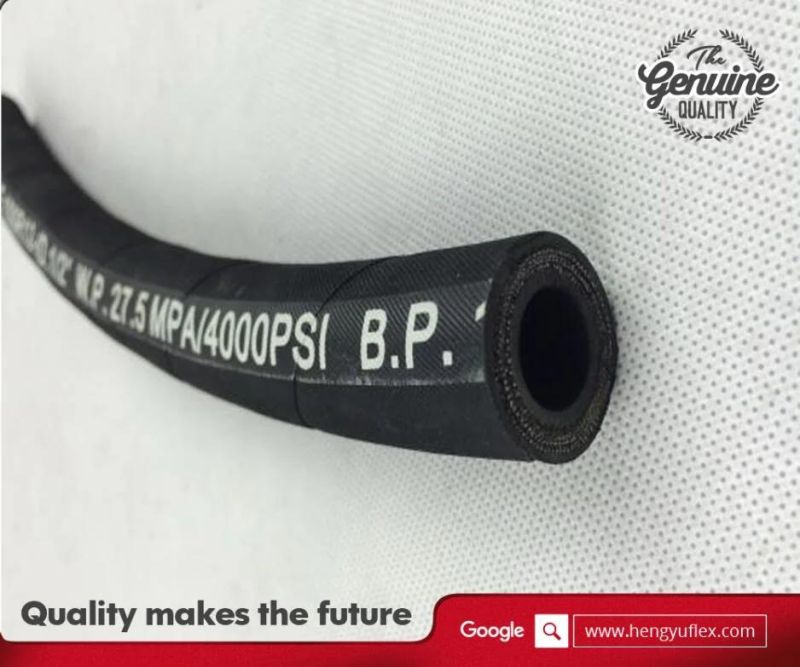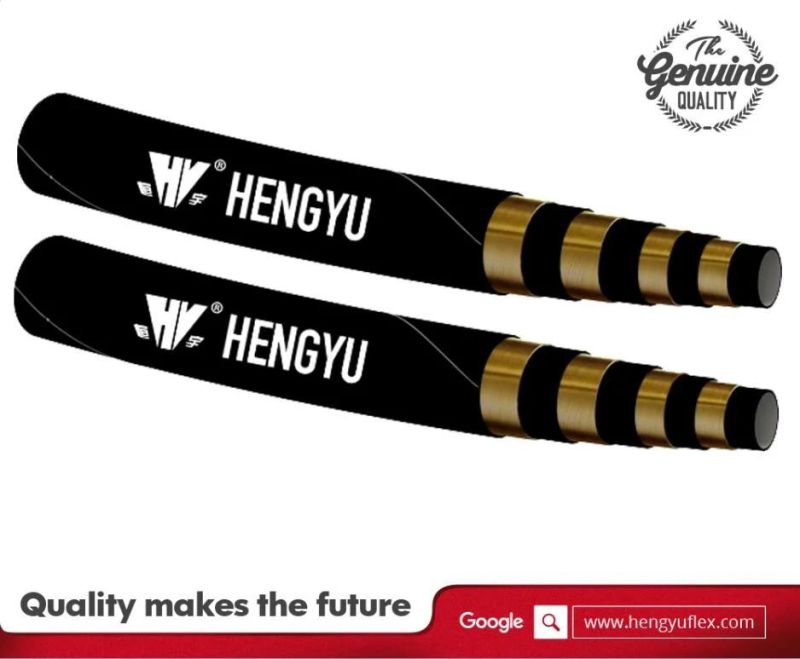
5000psi High Pressure Compact Used 3/8" Hydraulic Rubber Hose SAE100 R12
Hengyu Group Hydraulic Fluid Technology Hebei Co., Ltd.- Material:Synthetic Rubber
- Capability:Rubber Oil Hose
- Color:Black
- Transport Package:PVC Film
- Specification:synthetic rubber
- Trademark:HENGYU or OEM
Base Info
- Model NO.:rubber hose
- Origin:Hebei, China
- HS Code:4009210000
- Production Capacity:30, 000 Meters Per Day
Description
Burst Pressure
Minimum Bend Radius
inch
mm
mm
mm
Mpa
psi
Mpa
psi
mm
10
3/8"
9.5
17.2
20.3
27.5
4000
110.3
16000
130
13
1/2"
12.7
20.7
23.8
27.5
4000
110.3
16000
180
16
5/8"
15.9
24.6
27.4
27.5
4000
110.3
16000
200
19
3/4"
19.0
27.7
30.7
27.5
4000
110.3
16000
300
25
1
25.4
34.9
38.0
27.5
4000
110.3
16000
300
32
1-1/4"
31.8
43.9
47.0
20.7
3000
82.7
12000
420
38
1-1/2"
38.1
50.4
53.5
17.2
2500
68.9
10000
500
51
2"
50.8
63.7
66.7
17.2
2500
68.9
10000
630
Construction of rubber hydraulic hose
Modern hydraulic hose typically consists of at least three parts:
an inner tube that carries the fluid, a reinforcement layer, and a protective outer layer.
The inner tube must have some flexibility and needs to be compatible with the type of fluid it will carry. Commonly used compounds include synthetic rubber, thermoplastics, and PTFE, sometimes called Teflon. The reinforcement layer consists of one or more sheaths of braided wire, spiral-wound wire, or textile yarn. The outer layer is often weather-, oil-, or abrasion-resistant, depending upon the type of environment the hose is designed for.
Not surprisingly, hydraulic hoses have a finite life. Proper sizing and use of the correct type of hose will certainly extend the life of a hose assembly, but there are many different factors that affect a hose's lifespan. SAE identifies some of the worst offenses as:
•flexing the hose to less than the specified minimum bend radius
•twisting, pulling, kinking, crushing, or abrading the hose
•operating the hydraulic system above maximum or below minimum temperature
•exposing the hose to rapid or transient rises (surges) in pressure above the maximum operating
pressure, and
•intermixing hose, fittings, or assembly equipment not recommended as compatible by the
manufacturer or not following the manufacturer's instructions for fabricating hose assemblies.
Application of hydraulic hose :
- Will the selected hose meet bend radius requirements? This refers to the minimum bend radius (usually in inches) that a hydraulic hose must meet. Exceeding this bend radius (using a radius smaller than recommended) is likely to injure the hose reinforcement and reduce hose life. Route high-pressure hydraulic lines parallel to machine contours whenever possible. This practice can help save money by reducing line lengths and minimizing the number of hard-angle, flow-restricting bends. Such routing also can protect lines from external damage and promote easier servicing.



